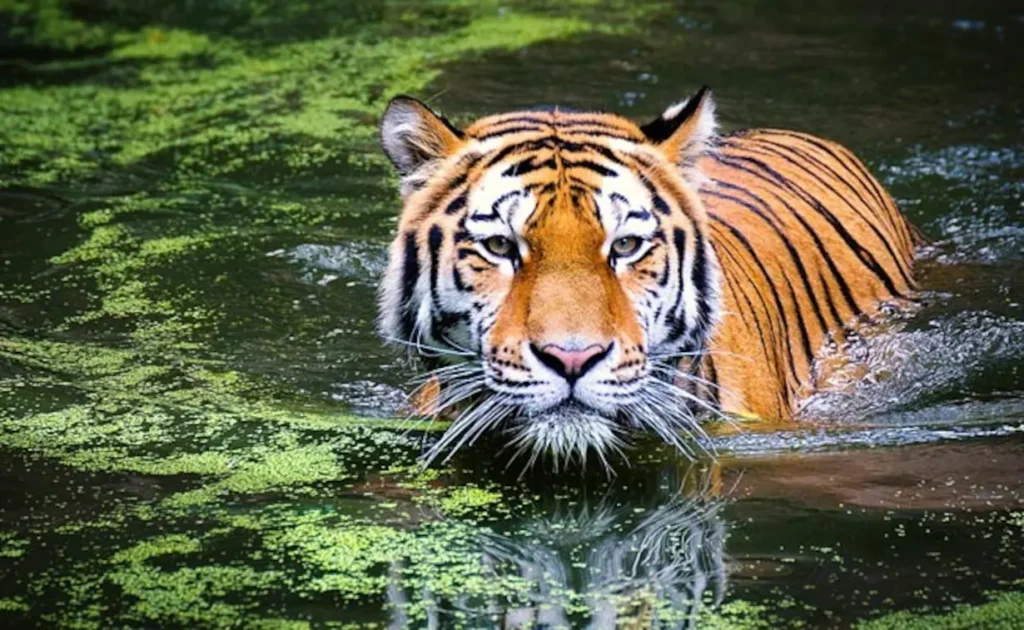Tiger populations in the wild have decreased to around 4,000 with the loss of almost 95% of their original habitat. Regretfully, there are currently just two nations attempting to preserve the wild tiger populations found in government reserves: India and Thailand.
Thailand currently has the wildest tigers in all of Southeast Asia. Thailand has received praise for its extensive conservation policies aimed at increasing the number of wild tigers. Thailand has made tremendous efforts to solve these issues and safeguard its tiger population, even though tigers across Southeast Asia suffer several dangers, such as habitat degradation, poaching, and conflict between humans and animals.
Strict anti-poaching measures are being implemented which is one of the main objectives in Thailand’s tiger conservation efforts. Because of the illegal wildlife trade and the need for their body parts in traditional medicine, poaching is still a danger to tigers. Thailand has stepped up patrols in protected regions, partnered with local communities to obtain information on possible poaching operations, and implemented cutting-edge technology like drones and video traps for monitoring. The goal of these initiatives is to break up the supply chain for tiger goods and lessen the unlawful killing of tigers.
In addition, Thailand has taken a proactive role in habitat protection to guarantee that wild tigers have a suitable place to live. National parks and protected areas have been created or enlarged to offer secure environments where tigers may hunt, wander, and reproduce without unnecessary human interference. By establishing wildlife corridors to connect disparate areas and restore damaged habitats, conservationists hope to increase genetic diversity among tiger populations.
Thailand has started captive breeding programmes to boost the number of tigers in restricted surroundings as a complement to these efforts. The creation of tiger breeding facilities, where captive tigers are raised to release offspring into the wild, is a common component of these initiatives. This strategy can add to the genetic variety required for a healthy and sustainable tiger population in addition to boosting the wild population.
Thailand’s significant involvement in international projects further demonstrates its dedication to the protection of tigers. The nation participates in global agreements like the Convention on International Trade in Endangered Species of Wild Fauna and Flora (CITES) and works with international organizations like the Global Tiger Forum (GTF). These kinds of partnerships make it easier for countries to coordinate their efforts, share resources, and exchange knowledge on the international aspect of animal conservation.
Another essential element of Thailand’s tiger conservation approach is community participation. Participating in conservation programs helps local populations living close to tiger habitats foster a feeling of responsibility and guarantee a harmonious relationship between tigers and humans. To raise awareness and lessen conflicts between people and tigers this could mean community-based monitoring, education programs, and sustainable livelihood projects.
Despite Thailand’s great advancements in tiger protection, difficulties still exist.
The loss of habitat caused by urbanization, agriculture, and infrastructure expansion is a continuing worry. As humans approach tiger habitats, the possibility of human-wildlife conflict increases, potentially leading to encounters and retaliatory killings.
Hunting is still an issue, encouraged by international demand for tiger parts and products. Despite enhanced anti-poaching measures, organized criminal networks remain a strong threat to conservation authorities.
Another problem Thailand has is maintaining genetic variety within the tiger population. Inbreeding can cause genetic defects and reduce the species’ general adaptability. While captive breeding programs help to increase population numbers, they must be carefully managed to avoid harmful genetic consequences.
Long-term conservation programs have additional challenges in terms of finance. Conservation efforts need ongoing financial support for patrols, technology, community involvement, and habitat restoration. Securing consistent funding sources is critical to the success and sustainability of Thailand’s tiger conservation activities. To address these ongoing challenges a mix of local and international collaboration, adaptive management practices, and a commitment to balance economic growth aspirations with conservation priorities is required.
- About the Author
- Latest Posts
A passionate advocate for all natural and sustainable ideas. With a background in sustainable economics science and a deep love for nature, Sojy has dedicated his career to promoting eco-friendly practices and encouraging others to live a more sustainable lifestyle. He is an avid hiker, gardener, and cook, and loves experimenting with natural ingredients in his recipes and lifestyle routines. Sojy believes that small changes can make a big impact and is constantly seeking out new ways to reduce his carbon footprint and inspire others to do the same




